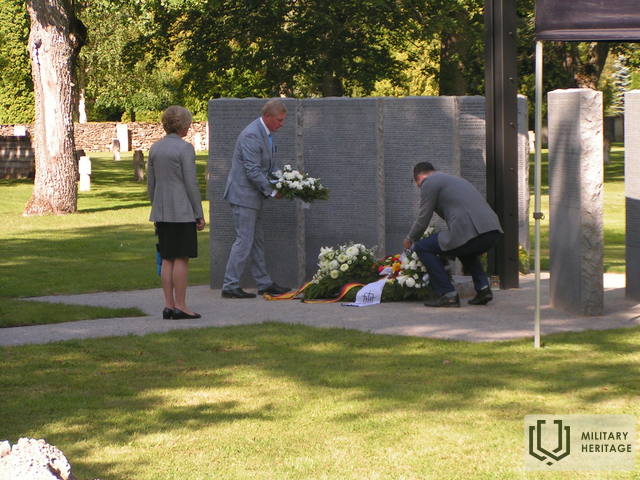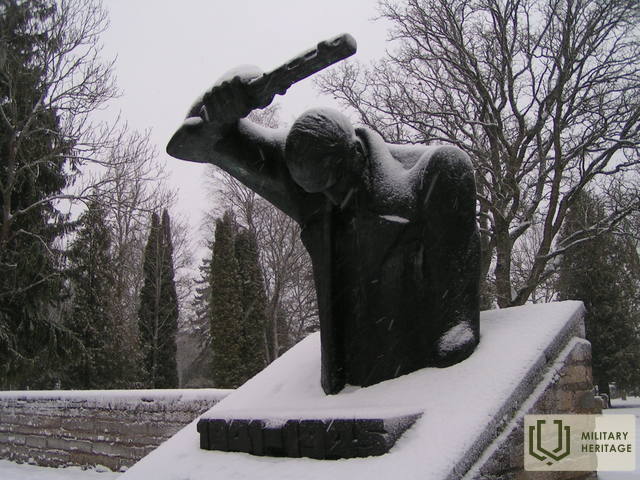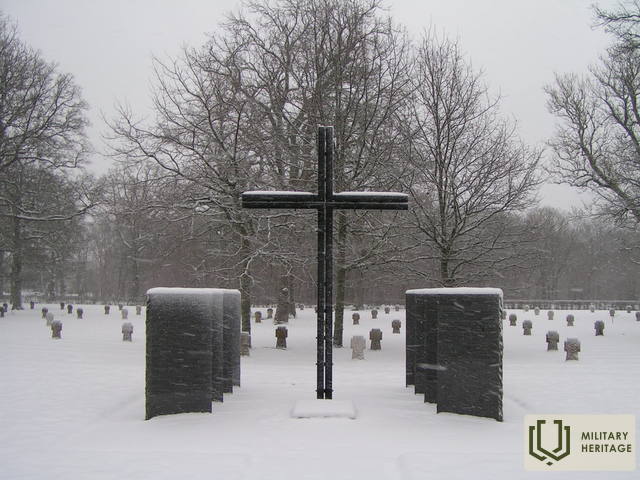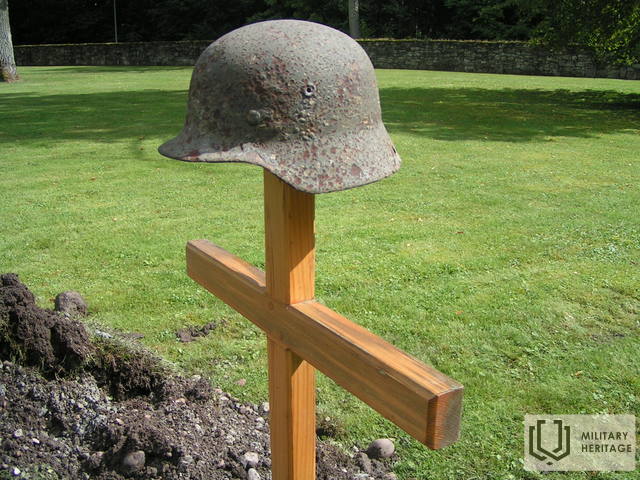Cemetery in Kudjape Memorial site

This military cemetery is situated on the outskirts of the town in north-eastern Kuressaare.
It forms part of the old town cemetery, where the first burials date back to 1780.
In 1942 a separate cemetery for German heroes was opened on the western side of the cemetery. The tombstones there were destroyed in autumn 1944. Some of the graves were used for Red Army soldiers who had fallen near Kuressaare.
This custom continued, as the cemetery became the final resting place for many Soviet soldiers who died of natural causes or while carrying out their duties after the war. Ordinary civilians too were buried there.
For example, the cemetery is the site of the graves of a state security agent by the name of Sirel and three border guards who stormed the Forest Brother bunker in Eikla Bog on 3 March 1946.
In 1986 the Soviet part of the cemetery was given a new look through renovations. Dolomite headstones surround a bronze half-figure of a fighter with his head lowered, holding a submachine gun above his head. It was sculpted by Ants Mölder to complement the designs of Hans Kõll. The cemetery is the site of the graves of 155 fallen soldiers.
In 1996 the German military cemetery was restored by the German War Graves Commission. A total of around 700 German troops had been buried there. The remains of German troops recovered in Saaremaa continue to be reinterred there to this day. The last such ceremony took place on 15 August 2019, with 33 soldiers buried in their final resting place, two of them from World War I. As of 14 January 2021 there are 1285 German soldiers interred at Kudjape.
The straight rows of dolomite tablets are generally inscribed with two names. Often these simply read ‘Unknown German soldier’. In the middle of the memorial site stands an iron cross and stone columns with the names of those whose remains are yet to be recovered. It is estimated that around a thousand soldiers are still missing. The names of the German soldiers whose graves remain on the Soviet side of the cemetery are listed on the stone tablets on the cemetery wall.















